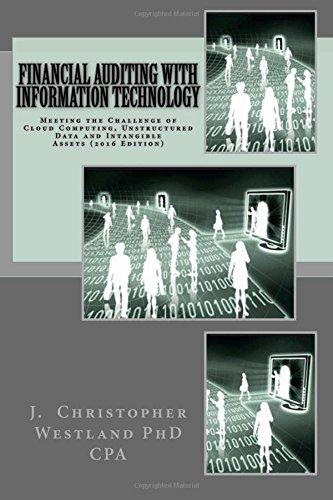Question
Anthony Bucker, the CEO of Bucker International, Ltd. is reviewing a project currently proposed by Buckers subsidiary in Sweden. The manager of the subsidiary, Adelaide
Anthony Bucker, the CEO of Bucker International, Ltd. is reviewing a project currently proposed by Buckers subsidiary in Sweden. The manager of the subsidiary, Adelaide Erricson, proposes the purchase of a set of equipment that would add a unique candle holder, what is known as Angel Chimes, to the companys production line. Bucker International, based in Istanbul Turkey, has been manufacturing galvanize-coated buckets, pans, watering cans, flower pots & vases, and various sizes of trash-cans for home and garden use since 1980. The company initially intended to meet the needs of local/domestic customers under the management of founder Mikhail Bucker. Following Mikhail Buckers retirement in 2000, his son Anthony Bucker (who had an MBA degree from Hardwood University a very prestigious academic institution) became the CEO of the company and Bucker International has continuously tapped foreign markets since then. Initially, the foreign business component of Bucker International was in the form of exports which included sales to Japan, United States, United Kingdom, Sweden, and various other European countries. MYKEA, a Swedish home products company that designs and sells ready to assemble home furniture, appliances, and home accessories, became the first foreign customer of Bucker International in February 2001. In fact, Adelaide Erricson was at the purchasing department of MYKEA at that time. In time, Anthony came to believe that establishing a foreign subsidiary in Sweden will put Bucker International in a better position in the Swedish market. In December 2005, Anthony Bucker asked Adelaide Erricson whether she would be interested in the idea. In early 2006, the Swedish subsidiary was formed. Part of the equity capital was provided by Adelaide who also immediately assumed the full control/ management of the subsidiary. Adelaide believes that this new addition to Bucker Internationals product line will enable them to penetrate further into decorative home-goods markets in Sweden and in other European countries as well. Angel Chimes is a unique, decorative, brass-made candle-holder. It was originally introduced in Sweden and has become a popular Christmas product in the entire Europe. It makes a delightful Christmas gift that could be enjoyed by all ages as part of joyous memories. The heat from the four candles spins a carousel of angels causing them to lightly tap the bells generating charming tinkling sounds. The Semi-Automated Angel Chimes (SAAC) machinery would require an initial cash outlay of 353,450.75 SEK (Swedish krona) that would cover all the investment necessary to purchase, modify, install and put the equipment into the production. SAAC would have a useful life of 10 years. With the aid of her assistant who is in charge of financial affairs of the subsidiary, Adelaide projected the following future cash flows expressed in SEK over the useful life of SAAC: Year Cash Flow 1 140,000.00 2 142,205.00 3 145,105.00 4 156,500.00 5 161,000.00 6 168,500.00 7 172,500.00 8 178,000.00 9 185,000.00 10 214,000.00
As Anthony pondered over these figures along with additional inputs and analyses provided by Adelaide, he was not quite sure whether the discounted cash flow analysis should be performed in Swedish kronas as Adelaides report implied, or in Turkish liras, or whether it mattered which currency was used. At the time of the analysis, the spot exchange rate was SEK 3.750/TL and ninety-day forward rate was SEK 3.765/TL. Banks wouldnt quote a rate for contracts beyond a year, and hence, Bucker International cannot hedge against currency risk via currency derivatives. Many analysts believed that annual inflation rate would run about 5% in Sweden and 3% in Turkey in the long run. Bucker Internationals TL hurdle rate (i.e., required rate of return) for a project of this type was 14%. (I) Compute the net present value of the SAAC project via two alternative models covered in class discussions. Recall, in either approach your goal is to express the NPV of the project in the currency of the MNC (i.e., in Turkish liras in this case): A) First Approach computes the NPV in kronas, by discounting krona cash flows at a krona discount rate; and then converting it into TL: What is the appropriate discount rate for valuing krona cash flows? What is the NPV in Kronas? What is the NPV in TLs? B) Second Approach computes the NPV directly in Turkish liras, by translating future krona cash flows into liras at expected future spot exchange rates: What are the future spot exchange rates for the next ten years based on relative purchasing power parity? What are the future cash flows expressed in TLs? What is the NPV in TLs? (II) Assume that Turkish banks rate for Turkish lira denominated loans were about 8% while the corresponding rate in Sweden had recently risen to 12%. What do you think about the 90-day forward rate of SEK 3.765/TL? Is it consistent with the short-term interest rates of 8% (on TL) and 12% (on SEK)? If not, describe a set of transactions to arbitrage these rates. Do you think Bucker International could profit more from investing in Sweden on short-term basis or in Turkey? To make a comparison between these two investment strategies, assume that Bucker international will use its own funds in the amount of SEK 375,000.00 (or corresponding TL amount).
Step by Step Solution
There are 3 Steps involved in it
Step: 1

Get Instant Access to Expert-Tailored Solutions
See step-by-step solutions with expert insights and AI powered tools for academic success
Step: 2

Step: 3

Ace Your Homework with AI
Get the answers you need in no time with our AI-driven, step-by-step assistance
Get Started


